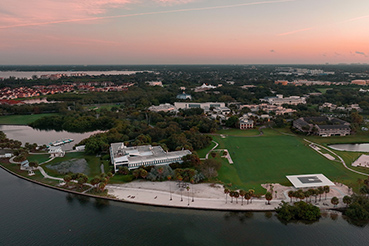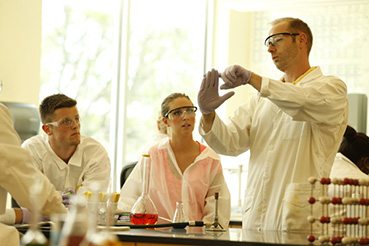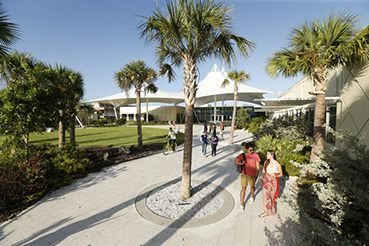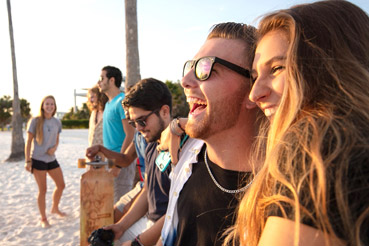Are you interested in working with reptiles or studying how diet and exercise impact human health? Have you always been fascinated by plants? Or are passionate about conservation of our planet’s coral reefs?
Biology faculty at Eckerd College conduct research with students that spans from molecular, biomedical to ecological and working with whole animals. Students are trained in laboratory procedures by faculty who are experienced, distinguished scientists. Beyond course work, students often work with faculty on:
- Independent studies for course credit
- Senior research theses
- Natural Science Summer Research Program
- off-campus field expeditions
- Scientific conferences on and off-campus
Check out what’s going on in our research labs below and feel free to contact faculty about opportunities to get involved!
Molecular/biomedical research
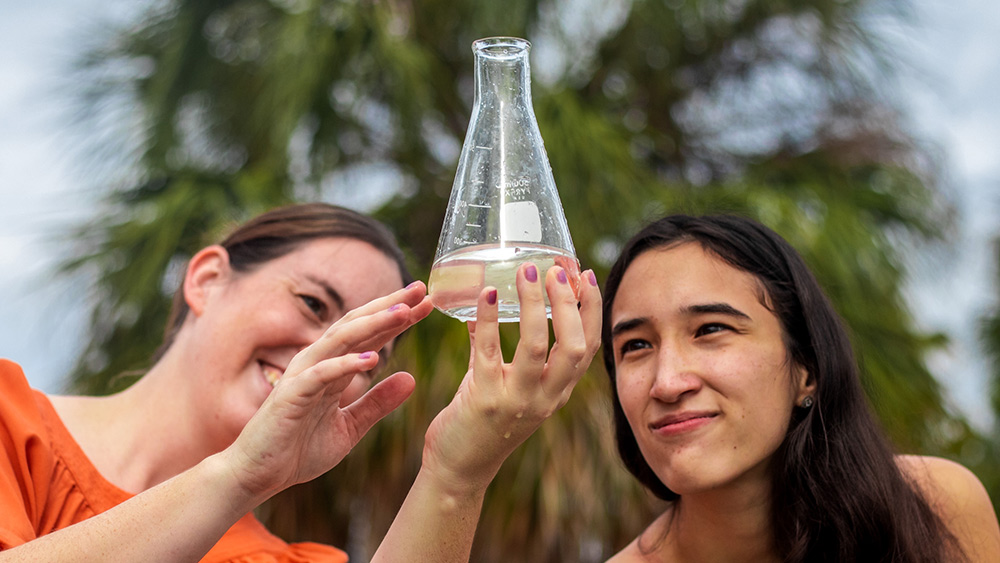
Whitney Bullock, Assistant Professor
Dr. Bullock investigates the role of exercise, or lack thereof, in the musculoskeleton, particularly in regards to human health and disease. With the help of student researchers, she studies the effects of mechanical stimulation, mechanical disuse and hormone signaling in bone, muscle and tendons. Learn more about her research.
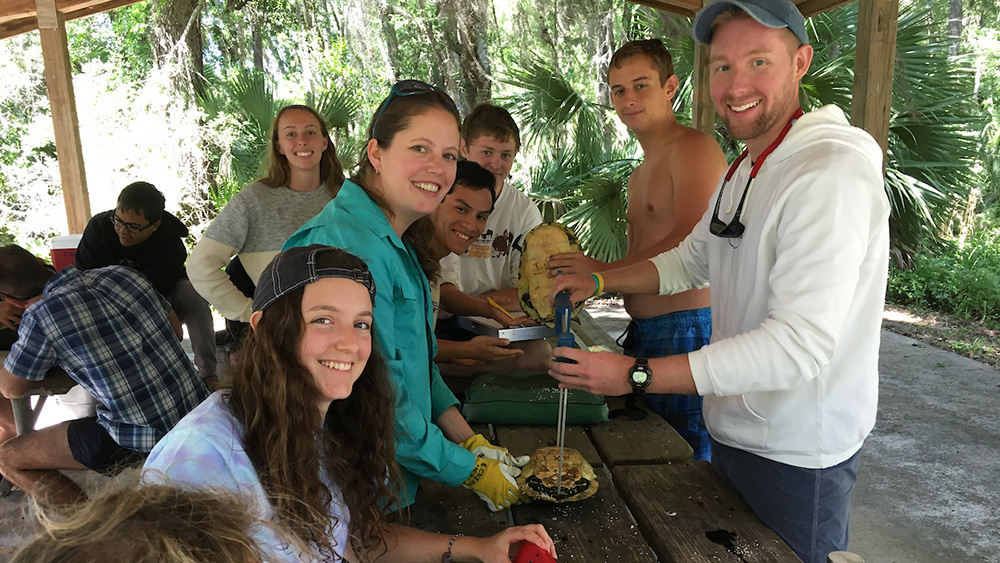
Liza Conrad, Associate Professor
Dr. Conrad is a plant geneticist interested in reproductive development, epigenetics and the regulation of gene expression. Her current molecular biology research focuses on the genetic control of flower development in cereal crops, such as rice and maize.
Scott Dobrin, Assistant Professor
Dr. Dobrin’s research focuses on linking molecular and structural changes in the brain with changes in behavior. Using insect models that display complex social behaviors (the honey bee and bumble bee), his laboratory studies the impact of environmental stressors on learning and memory. See what the Eckerd Neurobiology Lab is up to.
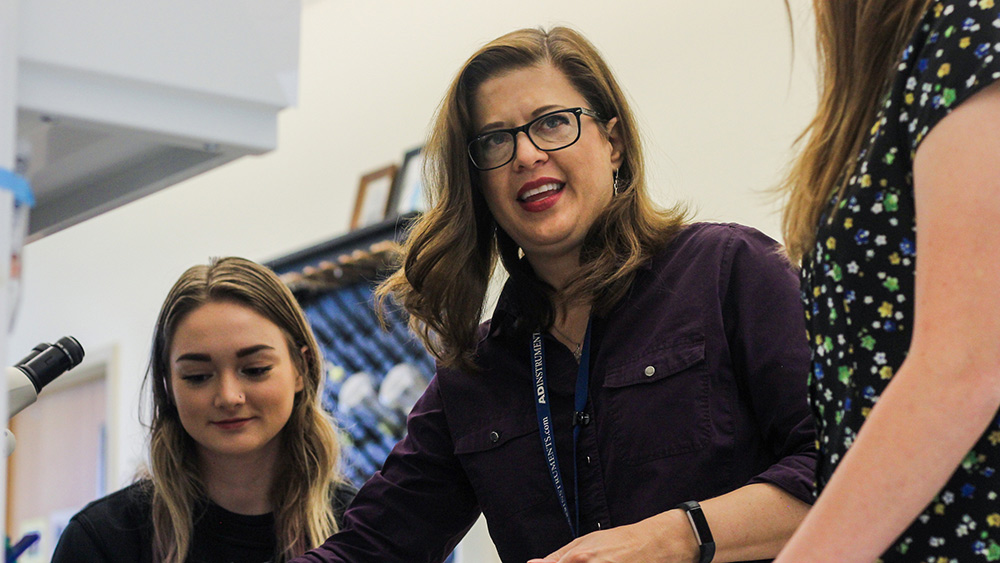
Denise Flaherty, Associate Professor
Dr. Flaherty uses the model genetic organism, Caenorhabditis elegans, to understand the impact of toxicants and molecular neuropathology on development, muscular function, reproduction, and neurological function. Her current projects fall into two categories: characterizing the oxidative stress, reproductive impact and neuromuscular changes induced by pesticides and anti-microbial chemicals, and screening natural and synthetic compounds for their ability to ameliorate cellular and molecular pathology in Alzheimer’s and Parkinson’s models.
Ecology and conservation biology research
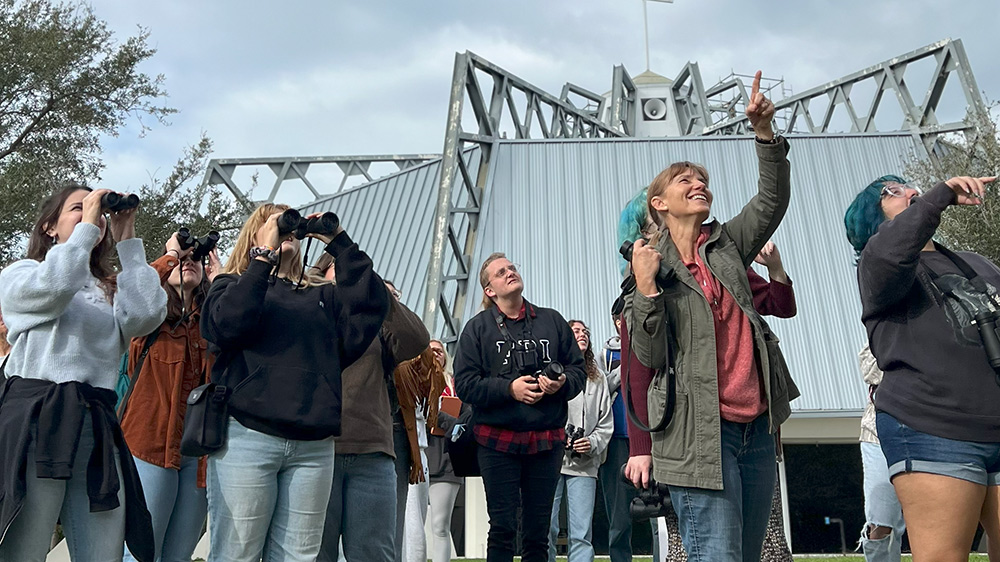
Elizabeth Forys, Professor of Environmental Studies and Biology
Dr. Forys is interested in spatial ecology and endangered species, but is passionate about any research topic that helps promote biodiversity. Her current research focuses on the conservation of seabirds, shorebirds and other coastal vertebrates. Check out her lab website.
Peter Scott, Assistant Professor of Biology
Dr. Scott is an evolutionary and conservation biologist that primarily works in herpetological (reptile and amphibian) systems. They use genomics, systematic and phylogenetic inference, population genetics analyses, and ecological experiments to describe and better understand the processes that have shaped Earth’s biodiversity and ensure it is effectively conserved.
Zoology/organismal biology research
Jeffrey Goessling, Associate Professor of Biology
As a zoologist, Dr. Goessling’s research on reptiles and amphibians explores questions of physiology, behavior, and conservation. His primary work on gopher tortoise conservation spans most of the southeastern United States and includes headstart programs, population monitoring and habitat restoration projects. His conservation efforts also extend to Aruba where he investigates the herpetofaunal community dynamics (including lizards and rattlesnakes) related to the spread of non-native Boa constrictor. If you love reptiles and amphibians, see what the Goessling Herpetology lab is up to.
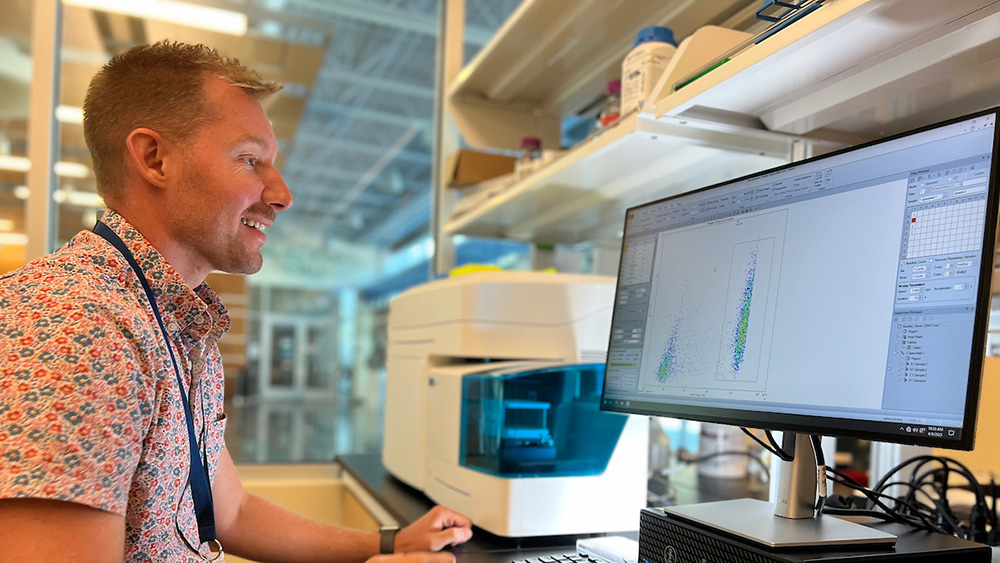
Cory Krediet, Associate Professor of Marine Science and Biology
Dr. Krediet’s research aims to better understand how associated microbiota affect the physiology of the coral holobiont and what mechanisms underpin the overall success of the symbiosis. He uses the model sea anemone, Exaptasia diaphana, to study how mutualistic or commensal microbiota influence the host’s physiologic response to various abiotic and biotic stressors. If you’re interested in conservation of our coral reef or studying symbiosis check out his lab’s website.
Grants and publications
Our student research assistants not only gain hands-on experience in the lab but are often co-authors on our peer-reviewed scientific publications.
A few recent examples with Eckerd undergraduate students shown in bold:
- Binienda, T., DeMartini, A., & Bullock, W. (2025). Defining the Critical Role of LRP4 in Neuromuscular Junctions and Bone Signaling. Lipidology, 2(1), 3.
- Ebey, K., & Scott, P. A. (2024). Limited Morphological Differences of Brown Anoles (Anolis sagrei) between Their Native Cuban and Invasive Florida Range. Southeastern Naturalist, 23(3), 282-296.
- Hilton, M. L., Ceballos, C., Heinrich, G. L., & Goessling, J. M. (2024). Social and Spatial Structure of Male-Female Interactions in Gopher Tortoises, Gopherus Polyphemus. Journal of Herpetology, 58(3), 122166.
- MacVittie, S., Cuyler, E., Rose, B. J., Hall, E. R., & Krediet, C. J. (2024). Holobiont-level responses to elevated temperature and reduced ph in Aiptasia. Bulletin of Marine Science, 100(4), 693–708.
- Valdepeñas-Mellor, Z., Tjahaja, K., Stoner, E. R., & Dobrin, S. E. (2024). Chronic, field-relevant imidacloprid exposure alters learning acquisition in honey bees. Bios, 95(3), 143-150

